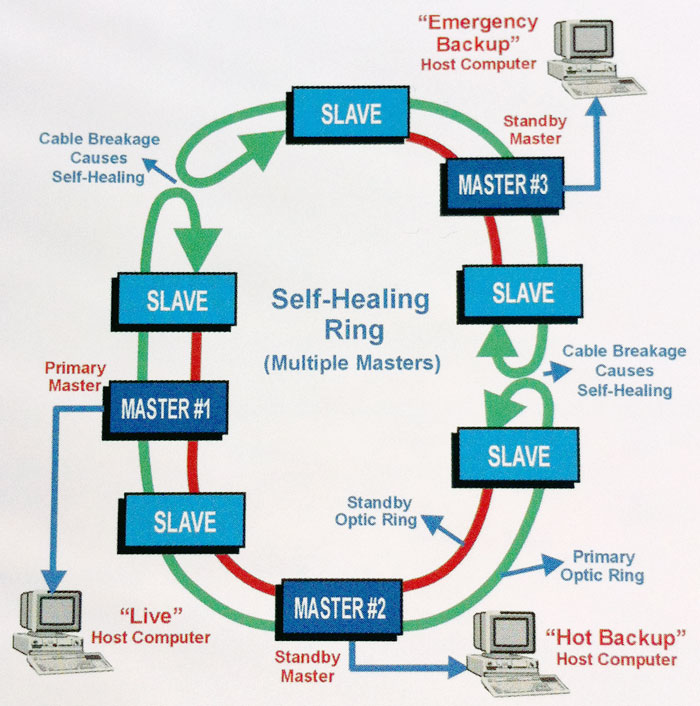The Future of Fiber Security System in High-Tech Security Solutions
The Future of Fiber Security System in High-Tech Security Solutions
Blog Article
The Ultimate Guide to Fiber Optic Security Systems for Your Organization
In a period where safety and security concerns are vital for organizations, comprehending the intricacies of fiber optic modern technology can be transformative. This overview lays out just how incorporating fiber optic protection systems not just improves data security however likewise provides advantages like resistance to interference and real-time monitoring capacities. As companies examine their safety requires, it ends up being important to think about the installation procedure and the most up to date technologies in the area. What particular factors should be focused on when choosing the best system, and how can businesses guarantee they make the most enlightened choices?
Recognizing Fiber Optic Technology

The core of a fiber optic cable is composed of a slim glass or plastic center, bordered by a cladding layer that mirrors light back into the core. Single-mode fibers are created for long-distance transmission, while multi-mode fibers are ideal for shorter distances, usually made use of within buildings.
Fiber optics are not only quicker however additionally much more safe than traditional wiring. Their integral resistance to electromagnetic disturbance and the difficulty of touching right into the signal without discovery make them a preferred option for organizations focusing on data integrity and safety. As companies significantly rely upon protected and effective communication systems, comprehending fiber optic modern technology becomes essential for informed decision-making.
Secret Advantages of Fiber Optic Security
When considering safety and security choices for a service, the advantages of fiber optic systems are particularly engaging. Primarily, fiber optic technology provides exceptional data transmission speeds and bandwidth capability, making it suitable for managing high-resolution video clip feeds from monitoring cams. This capacity makes sure that safety workers get real-time data, boosting general reaction times to potential protection hazards.
Additionally, fiber optic cable televisions are inherently resistant to electromagnetic disturbance, which can jeopardize the integrity of typical copper-based systems. This resistance makes sure that the data sent stays secure and nonstop, supplying a much more trustworthy protection facilities. Additionally, optical fiber are much less at risk to physical damages, as they are made from glass rather than metal, minimizing maintenance expenses and downtime.
Fiber optic systems use boosted cybersecurity attributes, including encryption capabilities that secure delicate information from unapproved accessibility. Collectively, these advantages make fiber optic security systems a robust choice for companies this link looking for to improve their safety actions.
Installment Refine and Factors To Consider
Considering the complexities involved, the installation process of fiber optic security systems needs cautious planning and execution. The initial step involves an extensive site assessment to identify optimal locations for cabling and tools. This analysis needs to take into consideration ecological elements, existing facilities, and prospective vulnerabilities.

Additionally, the installation must comply with neighborhood building regulations and market requirements. This may consist of collaborating with different stakeholders such as building supervisors, IT teams, and security employees to make certain smooth integration with existing systems.
Post-installation, rigorous screening is needed to verify system efficiency and determine any type of issues that might develop. By prioritizing these factors to consider throughout the installation procedure, services can guarantee a robust and efficient fiber optic safety and security system that satisfies their details safety requirements.
Newest Innovations in Fiber Optic Security
Current developments in fiber optic modern technology have significantly improved the capacities of click this protection systems for services. Among one of the most noteworthy technologies is the combination of fiber optic sensing units that can discover resonances and invasions along the boundary of a center. These sensors give real-time tracking, making it possible for fast feedback to potential violations.
Additionally, the advancement of distributed fiber optic picking up modern technology permits the continual monitoring of big locations with a single fiber cable television. This approach not only decreases installment expenses yet also enhances the integrity of keeping track of systems by removing the demand for multiple, separate sensors.
In addition, improvements in multiplexing strategies have actually enabled companies to transfer substantial quantities of information over fiber optic networks, enhancing the capabilities of video security systems. High-definition video feeds can now be sent over cross countries without loss of high quality, making sure that protection employees have accessibility to clear and workable details.
Last but not least, making use of expert system (AI) combined with fiber optic systems is transforming risk detection. AI algorithms can evaluate data from fiber optic networks to identify unusual patterns or behaviors, permitting proactive safety and security steps. These developments collectively represent a significant jump onward in fiber optic safety innovation.
Selecting the Right System for Your Business
Choosing the ideal fiber optic safety system for your service is vital for making sure ideal security and peace of mind. To make an informed selection, examine your certain safety and security needs, considering variables such as the size of your premises, the nature of your procedures, and potential susceptabilities.
Begin by examining the level of safety and security required; as an example, high-risk environments might necessitate innovative systems with integrated security and invasion detection capacities. Next, consider scalability; as your service grows, your protection system must can broadening to fit raised demands without substantial overhauls.
Additionally, examine the integrity and efficiency of various systems. Seek service providers with well established reputations and customer reviews that vouch for their solution quality. It's also recommended to ask about the modern technology's compatibility with existing facilities, making certain a smooth assimilation procedure.
Conclusion
In final thought, fiber optic safety and security systems present a durable service for enhancing organization safety infrastructures. The latest innovations better reinforce the effectiveness of these systems, making certain that companies remain safe and adaptable in an ever-evolving hazard landscape.
Report this page